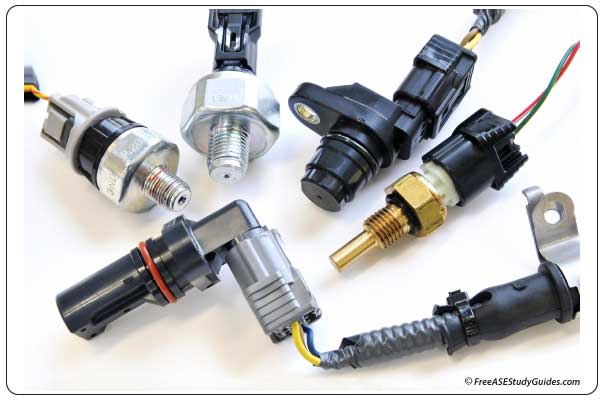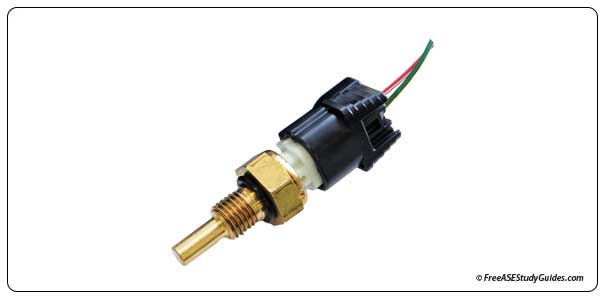Engine Performance: Input Sensors

There are many types of input sensors. The (ECT) or engine coolant temperature sensor is a variable resistor type sensor. It's an (NTC) or negative temperature coefficient thermistor because its resistance decreases as the coolant's temperature increases. It's vital in maintaining an engine's operating temperature. The sensor's signal changes according to the temperature of its environment, the engine coolant stream.

The sensor is usually on or around the thermostat housing or the intake manifold. It's continually sensing the temperature of the engine's coolant, lowering its resistance as the engine warms to operating temperature.
The (IAT) or intake air temperature sensor is a thermistor that changes its signal according to intake air temperature. The PCM provides a richer air-fuel ratio as cool air passes the sensor. Cold air is denser and contains more oxygen than warm air does.

The (TPI) throttle position sensor is a potentiometer that indicates the throttle plate's angle to the PCM. The ECM uses this sensor's information and several others to control injector pulse width and timing.

It's attached to the throttle plate shaft and controls a 5-volt reference signal sent to the ECM. The ECM uses this signal to adjust the fuel injector pulse width and ignition timing. Output voltage should be low, around 0.45 volts when the throttle plate is closed, and high or 4.5 volts at (WOT) wide open throttle.